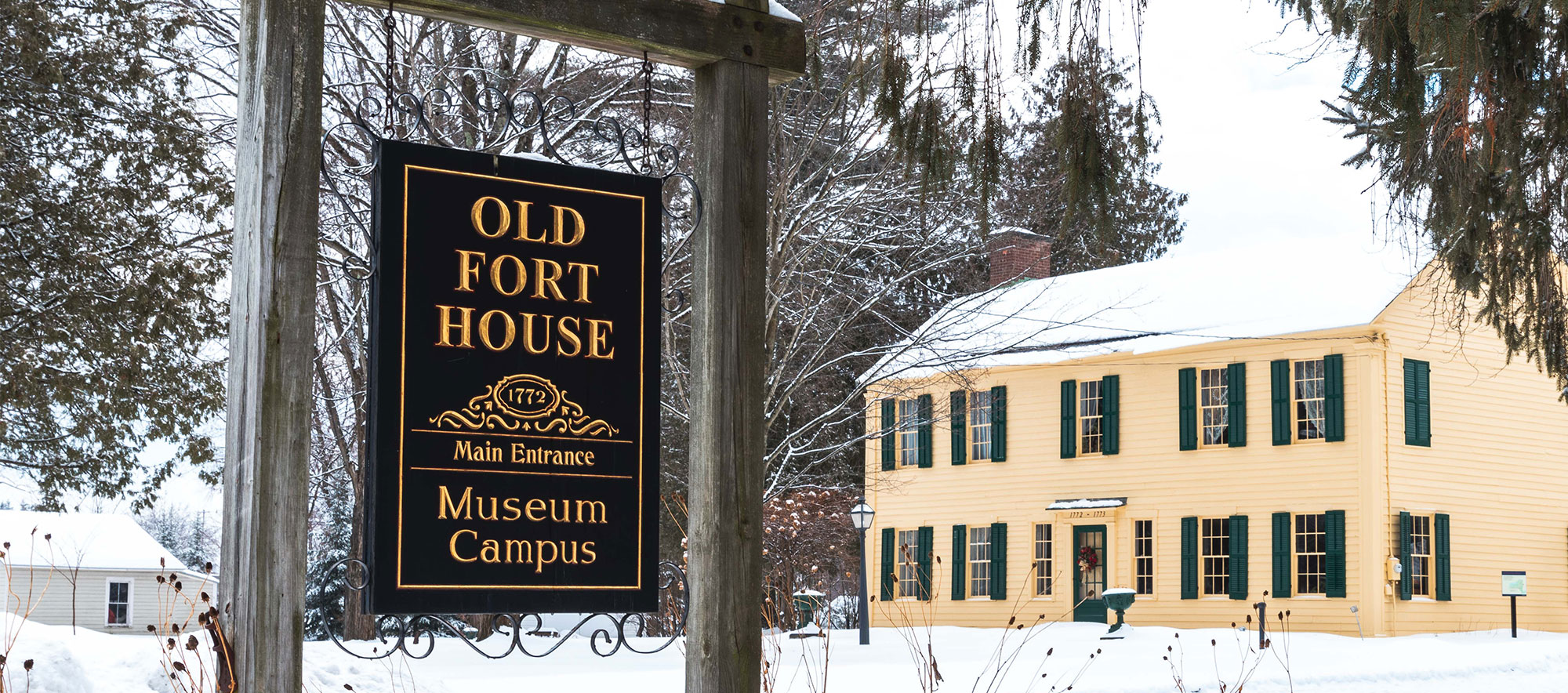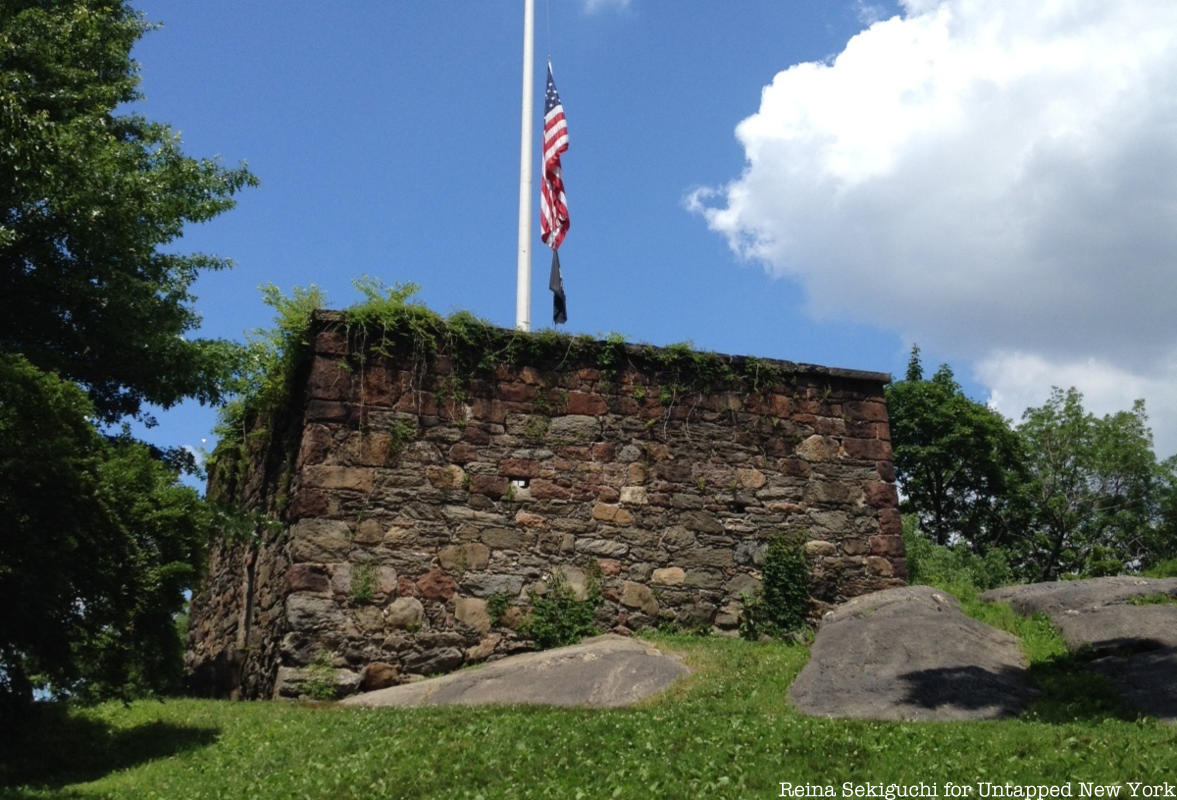New York Forts - This article requires additional citations for verification. Please help improve this article by referencing reliable sources. Incomplete material may be challenged and removed. Find source: "Fort Wadsworth" - News · Newspapers · Books · Scholars · JSTOR (November 2010) (see how and where to remove this template information)
40°36′18″N 74°03′24″W / 40.60500°N 74.05667°W / 40.60500; -74.05667 Coordinates: 40°36′18″N 74°03′24″W / 40.60500°N 74.05667°W / 40.60500; -74.05667
New York Forts

Fort Wadsworth is a former United States military installation located on State Island, New York, that separates Upper and Lower New York Bay, a natural point behind the Upper Bay and Manhattan. Before it closed in 1994, it claimed to be the longest continuously garrisoned military installation in the United States. Consisting of several fortifications, including Fort Tompkins and Battery Fires, it was originally named in honor of Brigadier General James Wadsworth, who was killed in 1865 at the Battle of the Wilderness during the Civil War. Fort Wadsworth is now part of the State Island Unit, a gated national recreation area protected by the National Park Service.
Gateway National Recreation Area
A narrow view of Farr Wadsworth. Seth Eastman, commissioned by the US Army in 1870. Fort Richmond/Battery Grass is near the water, Fort Tompkins is on Mt.
The area was first used for military purposes in 1655, when Dutch settler David Peters de Vries built a log cabin in 1663 on Signal Hill (the site of present-day Fort Tompkins).
The area is said to have been occupied continuously since another residential building was built in 1663, at least until 1808.
During the American Revolution, the site was known as Flag Crossing. Captured by the British in 1776, it remained in British hands and expanded until the outbreak of war in 1783. It became New York State in 1806, when four forts were built on the site with state funds, ready for service. Unfinished in 1808. These included the red sandstone Fort Richmond (now called Battery Grass) and Tompkins.
Upstate New York National Historical Parks — Paul Klenck Photography
Fort Richmond was originally semi-circular, while Fort Tompkins was round, with round buttresses, both of which differed significantly from the replacement of the third system.
Although these forts were contemporary with the federal government's second coastal fort system, they were not part of the federal program. Federal reconstruction of Forts Richmond and Tompkins did not begin until 1847.
Fort Richmond is named after Richmond County, where the island is located. Fort Tompkins was named after Daniel D. Tompkins, governor of New York in the War of 1812. Fort Morton may have been named after Major General Jacob Morton, who commanded the New York State Militia in the War of 1812. Fort Hudson is named Hry Hudson. , a British explorer of the Dutch East India Company who explored the river under his name.

In 1814, funds were appropriated to complete fortifications at Richmond and Fort Tompkins, and by 1815 the region was said to have assembled 900 cannons.
Old Fort Niagara (youngstown)
New York City was not attacked in this war (perhaps due to the large number of forts and cannons in the city and harbor), so the forts were never fired in anger.
By 1835, Forts Richmond (now Battery Grass) and Tompkins had deteriorated and were declared unusable, and the following year the federal government began the decades-long process of purchasing them.
In 1847, complete reconstruction of both forts began under the Third Federal Coastal Fortification System. A massive program of new fortifications began with the burning of Washington in the War of 1812. Some sources say that New Forts Richmond and Tompkins were originally built by Robert Lee Lee in the 1840s as a post engineer at Fort Hamilton.
Fort Richmond had one seaward side and three seaward sides, with an unusual four gun emplacements for a total of 116 guns facing the sea, as well as 24 flanking howitzers on the land front.
Safe Harbor? New York's Coastal Defense Forts From The Revolution To Today
The four-tier arrangement has been duplicated in the United States only at Fort Williams on Governors Island and Fort Point in San Francisco, California. Fort Tompkins provided most of the area's land defenses on one side and on all four sides of the sea. It was unusual for the main fort not to have cannons. A coastal artillery battery was mounted on the fore-roof of the fort, and the rest of the fort was only a sliver of musketry. On the land side it has a trench with tunnels to add musket fire against enemies, supplemented by several well-placed side howzers.
At the outbreak of the Civil War in April 1861, both forts were still incomplete and ready for use.
New York City was not attacked by sea in the Civil War, so the forts played no active role. However, they were important as transit centers, including Smith's Canton near the fort.

North and South Cliff batteries were built adjacent to Fort Richmond and were removed to Fort Wadsworth in 1865. Two small batteries of two and five guns were also built near Fort Tompkins.
Governors Island National Monument
After the war, the ramparts were found to be dilapidated. In the 1870s, a large but short-lived program was launched to build land defense batteries near the existing forts. The new Defs were armed primarily with Rodman rifles, 15-inch and 10-inch smoothbore guns, and 8-inch rifles. At Fort Wadsworth, this included improving the batteries built during the Civil War, as well as rebuilding the new mortar batteries near Battery Hudson and Fort Tompkins for new weapons.
Battery Hudson mounted America's first missing gun, the 15-inch Rodman King, on a depressant carriage, and the machine was not widely adopted. In 1875, a minesweeper was built at Fort Richmond to control the underwater minefields, which were later used again when mines became a standard part of harbor defenses.
In the late 1870s, funding for coastal defenses was cut off, and it was 20 years before new defenses were completed.
The Fortification Board of 1885, chaired by Secretary of War William C. Dicot, also known as the Dicot Board, recommended extensive improvements to the American coast, including new modern break-loaded guns and many new batteries. Most of the board's recommendations were adopted as a bipartisan program and included significant changes and improvements to Fort Wadsworth. The fort became part of the New York Artillery District in 1913, designated as the Southern New York Coastal Defense District. Part of Dicot's program included the expansion of the balloon fort area to Fort Wadsworth, the former Fort Richmond battery that became a hayfield in a February 4, 1902, General's Order. Battery Grass Brigade Commander Steph H. at Gettysburg in 1863.
Castle Williams On Governors Island Is One Of The Forts Built To Defend New York Harbor Just Prior To The War Of 1812 Stock Photo
Planting and monitoring facilities have also been established at the underwater mine site. Shortly after the outbreak of the Spanish-American War in early 1898, an unnamed battery of two 8-inch guns and two section batteries was commissioned. At the time, most of the batteries were still years away from completion, and the Spanish Navy was concerned about bombardment of ports on the east coast. The 8-inch gun was quickly changed from the wagon to the Rodman gun to accommodate the modern 8-inch M1888 gun. 6-inch and 4.72-inch Armstrong guns were procured from England to rapidly deploy medium-caliber rapid-fire guns in the fort.
The guns of the Provisional 8-inch Battery were withdrawn after the war (also in 1898) for use in the New Dicot Battery, and the Armstrong guns served until the 1920s. In 1901, the heavy artillery companies at all forts were redesignated Coast Artillery Companies, and in 1907 these units became a separate unit of the US Army Coast Artillery Corps. Battery Duen had an unusual problem: it was made of poor-quality concrete and eventually deteriorated, and the battery was decommissioned in 1915.
In 1910, the fort gave former President Theodore Roosevelt a 21-gun salute as his ship passed through the Narrows after returning from a nearly year-long tour of Africa and Europe.

In 1913, President William Howard Taft broke ground on the American Indian Memorial to be erected on the site of Fort Tompkins. The monument was intended to include a 165-foot (50 m) tall statue of an American Indian overlooking a narrow ridge on the hillside, but difficulties in raising funds and the outbreak of World War I prevented the plan from coming to fruition.
Fort Montgomery (lake Champlain)
An interior view of Fort Wadsworth showing the location of the fortifications within the building. The drawn red "road" marks the current location of the Verrazano-Tar Bridge, which connects Staten Island east to Brooklyn. This map was taken on site maintained by the National Park Service
After the Americans tried to enter World War I, F
Post A Comment:
0 comments so far,add yours